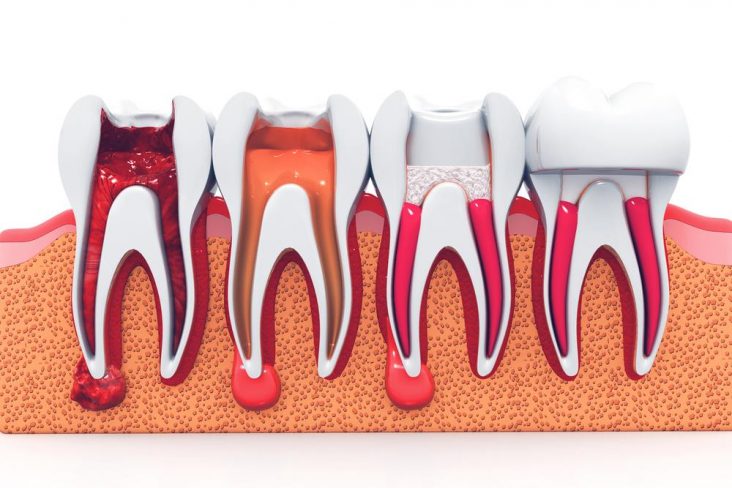Once you hear the words “root canal treatment”, there’s already a particular fear from the terrible pain that comes into your mind. If not, then it’s usually the expensive costs it often entails. But do we know what it is exactly?
Just like with many things in life, we first have to understand what root canal treatment is for us to remove that first impression of it being painful, and second, that it is an expensive procedure to have. So, without further ado, let us guide you through what root canal treatment is.
What is root canal treatment?
First things first, you need to know what makes up a tooth to have a better understanding of this treatment.
A tooth consists of 2 parts: a crown and its roots. The crown is what you can see above the gums while the roots are the ones that are attached to the jawbone. Inside the tooth is the root canal or is the shallow area that contains the nerve tissue, blood vessels, and other cells – or what is usually referred to as the pulp. The pulp is what nourishes the tooth and gives moisture to it. The nerve found in the pulp is what senses temperature.
Now, a root canal treatment or an endodontic therapy is done to save or to repair a tooth that is severely infected or damaged by the contaminated pulp. Before, a damaged pulp would be treated by completely removing it (the tooth) without bothering even to try to save it. But because of the continuous development in dental technology, root canal treatment is now a much easier and safer option that can keep your tooth from being removed altogether.
How do you know when there’s a pulp tissue infection or damage?
Every patient can feel different symptoms, but there are common ones that could help you detect it:
- There is a pain when you chew or bite down on something.
- Your tooth is susceptible to the temperature of the food or drink.
- There is a swelling in your face near the area of the toothache.
It is well to remember that other dental issues might also cause these and best not to jump into conclusions immediately. The best way for you to know is to have it checked by your dentist.
How root canal treatment is done
Root canal treatment works in 3 steps. And it usually takes between one and three sessions to complete, depending on whether there are other factors to consider, such as curved or multi-canals and larger infections.
Cleaning
With a patient under anesthesia, the root canal dentist makes a small hole on the surface of the tooth. There, the dentist can access the root canal using small files and removes all the infected pulp tissues.
Filling
The next step after cleaning the hollow area of the tooth is to decontaminate and shape it, using the tiny files and irrigation solutions. The tooth is then filled with a rubber-like material, using an adhesive cement to seal the canals completely.
The tooth is dead; however, once a root canal treatment is done to it. That is because all the nerves and pulp tissues are entirely removed, eliminating all the infections along with it.
Adding a filling
The tooth will be more fragile than it was. Without a pulp, the tooth can only receive its nourishment from the ligament that is attached to the jawbone.
This can be enough for the tooth, but over time, it will most likely become more brittle. That is why the root canal dentist needs to add a crown or filling to offer additional protection to the tooth.
It is best to remember that a patient cannot use that particular tooth until the filling is filled as it is still very brittle. But as soon as it is filled, it can be used just as it was before it got infected.
Is root canal treatment painful?
One of the things that patients think of about this treatment is usually the pain – of how terrible it is. But the truth is that the treatment isn’t at all painful. It’s the infection that causes the pain.
If anything, root canal treatment helps alleviate the pain.
And for the most part, the patient is under anesthesia, or the dentist would have numbed the tooth and its surrounding area, making you feel almost nothing – no pain whatsoever.
There will be some tenderness after the treatment, and that is pretty normal, but it will go away eventually. If this is something that would bother the patient, dentists would often prescribe an antibiotic or an over the counter pain medication to relieve you of the pain and prevent more infections.
Is root canal treatment expensive?
This varies greatly depending on a lot of things. But if there’s anything to live by, it is much better to prevent it immediately rather than waiting for it to worsen, resulting in more expensive treatment. The after treatment is also deficient maintenance, saving you costs there.
If you want to know more about our root canal treatment or if you’re planning to get one done, get in touch with us here in Abbotsford Dental Clinic today. We would love for you to consult us with any of your dental health issues.
 201 Nicholson Street Abbotsford VIC 3067
201 Nicholson Street Abbotsford VIC 3067
